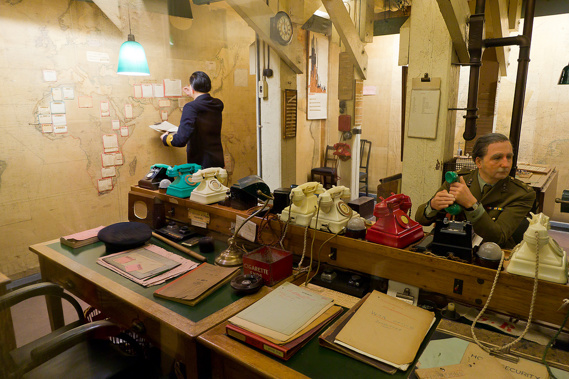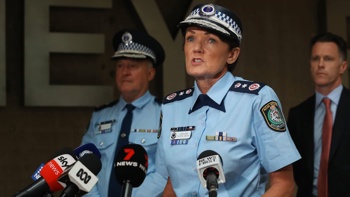
If you wanted to step inside one of London’s museums every day, it would take you over nine months to knock them all off – even though many of the individual collections are so massive, that a single day would barely do justice to them. But beyond the big-hitters, like the British Museum, the Tate Modern and the V& A, London is loaded with a cornucopia of museums to muse, including a generous dollop of the quirky, bizarre and macabre. Start with the Museum of London, which is free to enter and sweeps you through the capital's turbulent history in style. Even for a jaded traveller, it’s very digestible dip into prehistoric London and two thousand years of rolling history.
The 17th century was a horror time for Londoners, wracked by the triple prong of civil war, the plague and fire. The museum is currently commemorating the 350th anniversary of the Great Fire of London, with a special, high-impact interactive exhibition. Running until mid-April, it’s a sobering insight into the destruction of London through the eyes of people who were there at the time. Step into Pudding Lane and see what life was like at the time before walking into the bakery where the fire started and see how the flames of the inferno consumed the city. It’s absolutely terrifying. This gutsy exhibition finishes on a stirring high, with the city’s resurrection from the ashes graphically illustrated.
A truly searing experience is to head underground into the Churchill War Rooms, the secret headquarters for the British government throughout World War II. Housed beneath Whitehall in a bunker complex below the Treasury, this is where Winston Churchill directed his forces to defeat Hitler. Highlights include the Map Room, from which officers of the navy, army and air force tracked battles and troop movements around the globe; and the Transatlantic Telephone Room, a closet-size space with a scrambled phone line direct to the White House, on which Churchill had top-secret conversations with President Roosevelt.
Many of the workers remained underground for weeks on end. After just an hour, I felt claustrophobic. Exposed ceiling panels give you a glimpse of the 10-foot-thick reinforced concrete slab, designed to protect the Cabinet rooms from German bombing raids during the Blitz. It’s since been revealed that the concrete buffer, formidable as it looks, probably wouldn’t have withstood a direct hit. It was Margaret Thatcher who was instrumental in ensuring this secret bunker was preserved in its museum-like state, presiding over its opening to the public in 1984.
The furnishings, maps, historical documents and artefacts are enthralling, particularly in the frozen-in-time appearance of the rooms, as if Churchill has momentarily stepped out. A decade ago, an adjoining museum was added to the war rooms, providing a comprehensive overview of Churchill’s life. Some of the stand-out display items include the original front door to No. 10 Downing Street used by Churchill, his bowler hat and half-smoked, heavily chewed La Corona cigar.
Just past Harrods, the Natural History Museum would have to rate as one of London’s most beautiful landmarks. If you’ve seen the Paddington movie, this is the building that features extensively, and where the cruel taxidermist, played by Nicole Kidman, attempted to add the spectacled bear to her stuffed collection of endangered animals. Standing in the Central Hall, below the famous Diplodocus skeleton, the soaring staircase and exquisite stonework is a visual knock-out.
This colossal storehouse in South Kensington is home to 70 million specimens. I only had time for a cursory browse, taking in the likes of giant sloths and dodos, before feeling patriotically roused by the North Island brown Kiwi on display. Unfortunately, he looked rather emaciated and in dire need of more stuffing. Be warned - the billowing queues to access this free museum can be truly horrendous. The Dinosaur Gallery is the crowd-pulling culprit, home to the roaring animatronic T-Rex.
If you want to sample some of London’s lesser-trafficked niche museums, here’s a few thought-starters. The Museum of Brands, Packaging and Advertising, in Notting Hill, is a smash-hit with nostalgia buffs, boasting 12,000 original items, be they packets of cereal, tins of baked beans or sachets of custard powder, from Victorian times onwards. This is a well-stocked larder of mostly decommissioned products that once held pride of place on family kitchen tables.
The Magic Circle in Euston is a private club where magicians converge, full of mystery. The museum is an adjoining space, open to the public, offering engaging insights into how the world’s greatest illusionists operate. You can view props and memorabilia used by some of the world’s best artists, like Harry Houdini’s handcuffs and the rifles used for Maurice Fogel’s ‘bullet catch.’
The Old Operating Theatre, in London Bridge, is a one-of-a-kind experience. This is the only remaining 19th-century operating theatre in England, where you can watch demonstrations of surgical techniques and volunteer to be "operated on". In the 1800s, this old theatre was the last hope for the deathly sick at St. Thomas’s Hospital. The medical equipment was primitive and anaesthetic was ineffective, so invasive surgeries such as amputations were horrific ordeals. Apparently a skilled surgeon could perform the procedure in under a minute, but novices would hack and chisel away at mangled limbs for much longer. It’s a gruesomely riveting museum!
Where to stay? Marble Arch is one of my favourite London landmarks, and just off Oxford Street, The Arch is an irresistible, top-value boutique hotel. Spanning a clutch of Georgian townhouse buildings, this elegant property provides free Wi-Fi , a lip-smacking choice of dining options and splendidly designed guestrooms. Chic and stylish, my room was equipped with three flat-screen TVs, one which was like a jack-in-the-box at the end of the bed, while another entertained me in the sumptuous bathroom. Oh, the decadence!
All rooms are individually designed with hand-printed wallpaper, plush furnishings and original artworks. The highly attentive and personable staff embody the best in guest service. Enjoy a twice-daily cleaning service, free newspapers and a lavish buffet breakfast. The Martini Library is a charming little bolt-hole, where snug armchairs, fireplaces and bookshelves underscore the hotel’s passion for timeless luxury. Dine in the HUNter 486 restaurant and enjoy afternoon tea or a cheeky drink or two in Le Salon De Champagne. The Arch is a member of Small Luxury Hotels of the World. For best rates, head to www.slh.com/hotels/the-arch-hotel-london/
Finally, in the city that gave birth to hop-on, hop-off sightseeing, Big Bus Tours lace all of London’s essential landmarks together, with three touring routes, excellent on-board narration and elevated views. It’s the ideal way to hop-scotch your way around London’s crown jewels and those myriad museums.
Take your Radio, Podcasts and Music with you









